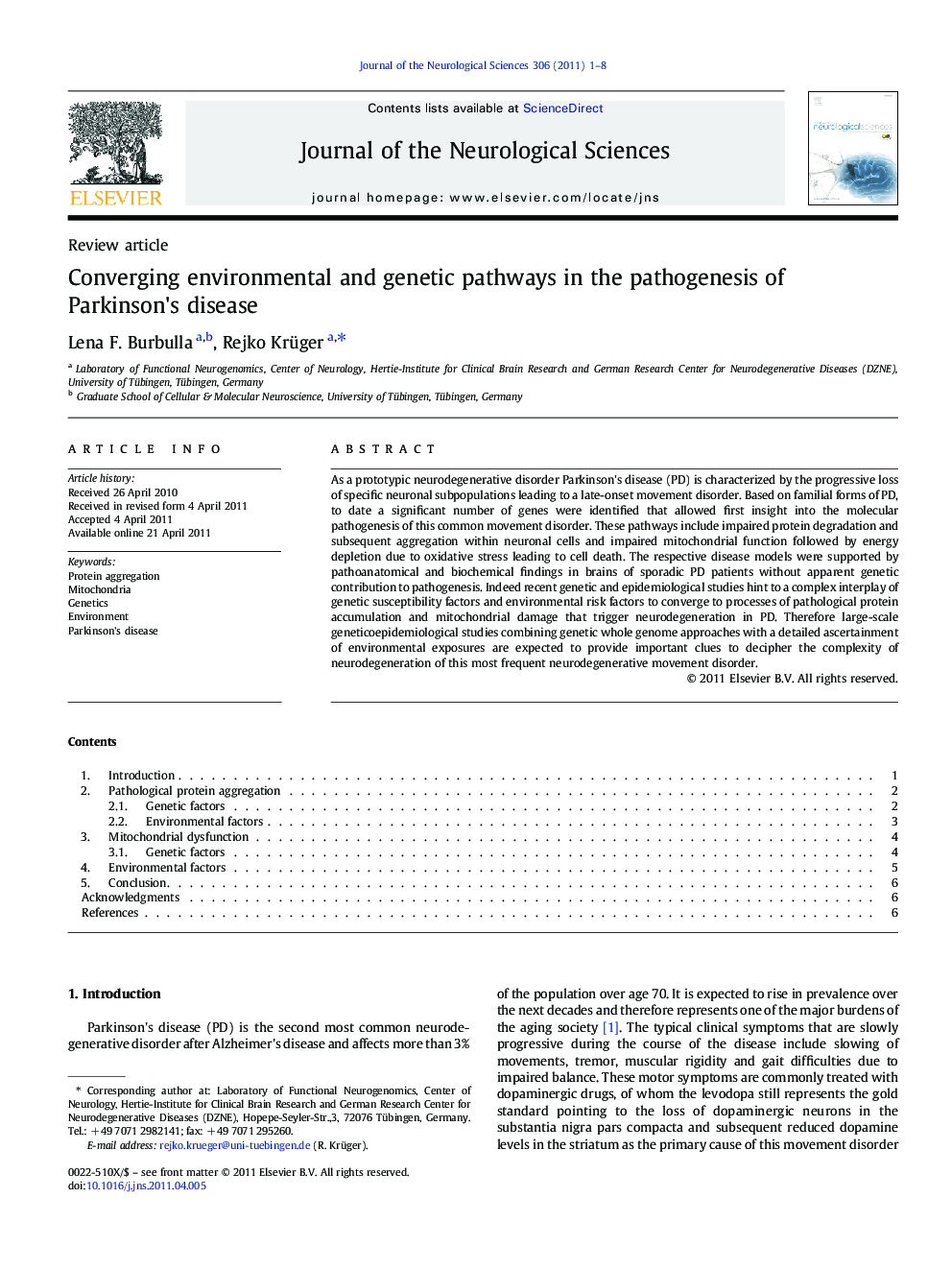| Article ID | Journal | Published Year | Pages | File Type |
|---|---|---|---|---|
| 1914181 | Journal of the Neurological Sciences | 2011 | 8 Pages |
As a prototypic neurodegenerative disorder Parkinson's disease (PD) is characterized by the progressive loss of specific neuronal subpopulations leading to a late-onset movement disorder. Based on familial forms of PD, to date a significant number of genes were identified that allowed first insight into the molecular pathogenesis of this common movement disorder. These pathways include impaired protein degradation and subsequent aggregation within neuronal cells and impaired mitochondrial function followed by energy depletion due to oxidative stress leading to cell death. The respective disease models were supported by pathoanatomical and biochemical findings in brains of sporadic PD patients without apparent genetic contribution to pathogenesis. Indeed recent genetic and epidemiological studies hint to a complex interplay of genetic susceptibility factors and environmental risk factors to converge to processes of pathological protein accumulation and mitochondrial damage that trigger neurodegeneration in PD. Therefore large-scale geneticoepidemiological studies combining genetic whole genome approaches with a detailed ascertainment of environmental exposures are expected to provide important clues to decipher the complexity of neurodegeneration of this most frequent neurodegenerative movement disorder.
